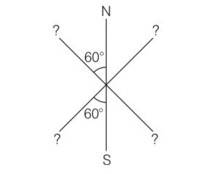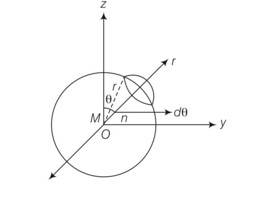Physics Ncert Solutions Class 12th
Get insights from 1.2k questions on Physics Ncert Solutions Class 12th, answered by students, alumni, and experts. You may also ask and answer any question you like about Physics Ncert Solutions Class 12th
Follow Ask QuestionQuestions
Discussions
Active Users
Followers
New answer posted
4 months agoContributor-Level 10
This is a short answer type question as classified in NCERT Exemplar
Let us take a point p to be at a distance z from the center of ring
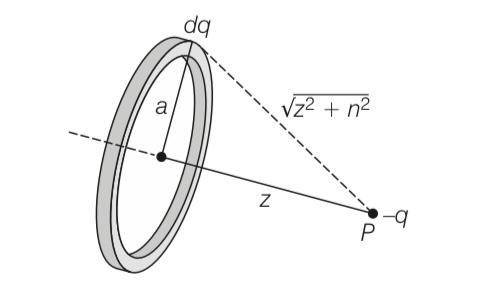
V=K = =
U= w =qV= =
Charge would perform oscillations.
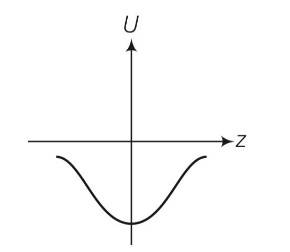
New answer posted
4 months agoContributor-Level 10
This is a short answer type question as classified in NCERT Exemplar
According to the relation that E= - , potential always decrease in the direction of electric field . so if we go from any point to infinity that decreases the potential.
New answer posted
4 months agoContributor-Level 10
This is a short answer type question as classified in NCERT Exemplar
The capacitance of the parallel plate capacitor, with dielectric medium of dielectric constant K is given by, C=K? 0A/d
The capacitance of the parallel plate capacitor decreases with the removal of dielectric medium.
If we disconnect the battery from capacitor, then the charge stored will remain the same due to conservation of charge.
The energy stored in an isolated charge capacitor U =q2/2C as q is constant, energy stored U ∝ 1/C .As C decreases with the removal of dielectric medium, therefore energy stored increases.
The potential difference across the pla
New answer posted
4 months agoContributor-Level 10
This is a short answer type question as classified in NCERT Exemplar
If there is a potential then E? 0 electric field comes into existence, which is given by as E=-dV/dr
It means there will be field lines pointing inwards or outwards from the surface. These lines cannot be again on the surface, as the surface is equipotential. It is possible only when the other end of the field lines are originated from the charges inside. Hence, the entire volume inside must be equipotential.
New answer posted
4 months agoContributor-Level 10
This is a short answer type question as classified in NCERT Exemplar
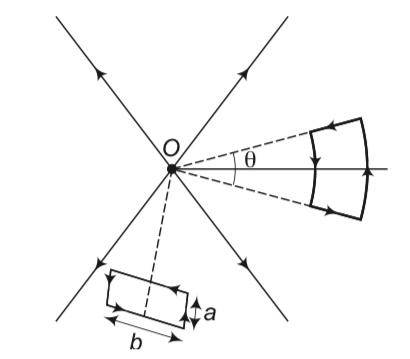
As the electric field and force both are conservative so work done in conservative body as the body is closed is zero.
New answer posted
4 months agoContributor-Level 10
This is a Short Answer Type Questions as classified in NCERT Exemplar
Explanation- the system will be in stable equilibrium if the net force on the system is zero and net torque on the system is also zero.
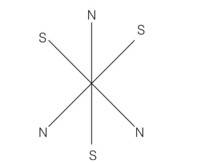
New answer posted
4 months agoContributor-Level 10
This is a Short Answer Type Questions as classified in NCERT Exemplar
Explanation- magnetic moment of dipole at origin o is
M=Mk
Magnetic field induction at p due to dipole moment
B= r
dS= r(rsin )r = (r2 sind )
= r(r2sin )
{cos4 }
(1-1)= 0
New answer posted
4 months agoContributor-Level 10
Explanation- When a diamagnetic material is dipped in liquid nitrogen, it again behaves as a diamagnetic material. Thus, superconducting material will again behave as a diamagnetic material. When this diamagnetic material is placed near a bar magnet, it will be feebly magnetised opposite to the direction of magnetising field.
(i) Thus, it will be repelled.
(ii) Also its direction of magnetic moment will be opposite to the direction of magnetic field of magnet.
New answer posted
4 months agoContributor-Level 10
This is a Short Answer Type Questions as classified in NCERT Exemplar
Explanation - = I/H
Diamagnetism is due to orbital motion of electrons in an atom developing magnetic moments opposite to applied field. Thus, the resultant magnetic moment of the diamagnetic material is zero and hence, the susceptibility χ of diamagnetic material is not much affected by temperature.
Paramagnetism and ferromagnetism is due to alignments of atomic magnetic moments in the direction of the applied field. As temperature is raised, the alignment is disturbed, resulting decrease in susceptibility of both with increase in temperature.
New answer posted
4 months agoContributor-Level 10
This is a Short Answer Type Questions as classified in NCERT Exemplar
Answer- density of nitrogen = 28g/22.4L= 28g/22400cc
density of copper = 8g/22.4L= 8g/22400cc
on comparing = = 1.6 10-4
= = 5 10-4
As we know
= 1.6 10-4
Taking an Exam? Selecting a College?
Get authentic answers from experts, students and alumni that you won't find anywhere else
Sign Up on ShikshaOn Shiksha, get access to
- 65k Colleges
- 1.2k Exams
- 686k Reviews
- 1800k Answers

